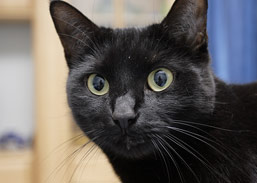Abscesses occur when an animal gets a small wound and bacteria gets inside. Small wounds heal over very quickly, but the trapped bacteria grows and forms a pocket of puss. Puncture wounds from bites are a very common cause of abscesses, especially in cats, because the small puncture is an easy delivery for bacteria and the opening is very small so it closes up quickly. The main cause is usually a scuffle with another cat, but abscesses can occur for other reasons such as dental disease or impacted anal glands, and they can develop on any part of the body.
You can recognize if your cat has an abscess because they are painful lumps that develop very quickly and soft to the touch. Since abscesses are infections, your pet will usually develop a fever and not feel very well. Typical signs of an abscess are lethargy, depression and reluctance to eat. Sometimes the abscess will have a scab from the original wound or there could be discharge.
If your cat gets an abscess, it is important to take them to the vet very quickly so that it can be treated before it gets too big. If abscesses are left untreated they will grow (and get very large) until they burst either breaking the skin or into the body which can infect the blood or other tissues. Small abscesses can be treated with antibiotics, but large ones need surgical intervention. The vet will lance the abscess to release the pressure then flush out the puss and put in a drain to keep the wound open long enough for all of the infection to drain out. Pet parents need to put hot compresses on the area to keep it clean and help it drain.
Studies
Bacteriologic analysis of infected dog and cat bites.
Lymph node abscess due to actinomyces viscosus in a cat.
Recovery of two mycoplasma species from abscesses in a cat following bite
wounds from a dog.
Description of strains of peptostreptococcus anaerobius insolated from
subcutaneous abscesses in cats.
Isolation and characterization of bacteria from abscesses in the subcutis of
cats.


